EUROPEM - Services for Improving Efficiency and Reducing Costs for Process Industries
Belgium
Manufacturer/ Producer

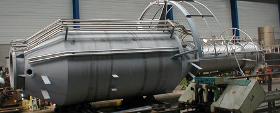
EUROPEM
Belgium
Europem can supply complete flare systems which include knock-out vessels, water seals, molecular seals, conical purge gas seals, pilots and ignition systems. Additionally, Europem has developed a unique ATEX zone O vapour extraction system for use in conjunction with VRU’s, combustors, flares and thermal oxidisers. Vessels Europem supplies the upstream equipment to remove droplets from gases or provide a seal between the flare burner and the waste gas piping in order to prevent air from infiltrating the flare riser and thus prevent flash back. Purge gas is employed to prevent flash back by stopping air ingress to the flare gas header. Molecular seals and also Conical seals are both devices that reduce purge gas flow rates. Conical seals will require a slightly higher purge gas flow rate than a Molecular seal, but have the advantage of a simpler more economic design. This design cannot be blocked by debris, sludge or ice formation and does not put additional load on the flare structure, being integral to the flare riser. Although purge systems are the perfect solution for flash back prevention, the flow of purge gas can always be lost. A water seal can be installed to provide the ultimate barrier to flame propagation upstream in the waste gas piping. Vessels can be supplied either as an integral part of a flare system or as stand alone items. Both vertical, typically integrated with the Flare riser, or horizontal configurations are available. Features Water Seal Vessels equipped with an overflow weir to maintain a minimum water level, anti-pulsation baffles and a dip-pipe with distribution cone forcing the waste gas to flow through the water bath. Molecular Seals are equipped with a riser pipe and cap to either form a layer of purge gas on the top, when the purge gas is lighter than the air, or on the bottom when the purge gas is heavier than the air of the vessel Conical Seals are in fact an inverted conical restriction made as a section of the riser. This restriction will locally induce a higher waste gas velocity which in turn entrains any penetrating air and carries it up to the flare burner. Knock Out Drums contain packing to separate droplets from the waste gas. A liquid level control with automatic purging prevents the vessel from overfilling. Models EP-WS Water Seal Vessel EP-MPRS Molecular Purge Reduction Seal EP-CPRS Conical Purge Reduction Seal EP-KOD Knock-Out Drum
Request for a quote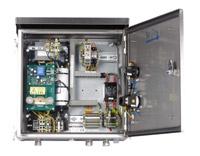
EUROPEM
Belgium
Europem ignition systems and pilot burners have been developed for their continuous reliable operation in harsh environments and in all weather conditions. High grade alloys are used and critical parts are mounted in protective housings to ensure the long lifetime of the equipment. Both High Energy electronic spark ignition and flame front ignition systems are offered. Flame Front Ignition (FFG) systems have been used as the workhorse of the flare industry for many years. The FFG pilot ignition line is filled with a combustible gas/air mixture, then ignited by a spark on the ignition skid to generate a flame front travelling through the ignition line up to the flare burner. This flame front subsequently ignites the pilot gas and the waste gas in the flare burner. Both manual and automatic flame front ignition systems can be offered. High Energy Electronic spark ignition uses a high voltage electric arc to ignite the combustible pilot air-gas mixture. The arc is generated at fixed intervals for a limited period of time. EP-ESPI Electronic Spark Ignition EP-FFGI Flame Front Ignition EP-CIS Combined Electronic and FFG Ignition systems can be supplied with either Manual or Automatic ignition controls, or a combination of both. For safe areas and for explosion proof areas, either onshore or offshore and with retractable or non-retractable ignitor rods. Pilot Burners Pilot burners can combine one or more of the ignition systems described above and with a continuous flame to ensure that combustible waste gas mixtures are always ignited and combusted. Europem pilot burners have the following features: High Energy Ignition to ensure reliable ignition regardless of moisture levels, dirt or atmospheric conditions Ignition rod, spark plug and thermocouple are housed in the main pilot body for added protection and prevent exposure to high temperatures Made from high grade stainless steel alloys Pilot burners can be supplied with Single or Duplex Thermocouples or Thermocouples plus Ionisation detection. Self-aspirating venturi mixers or with forced draft air High temperature cable with pre-wired plug and socket connections AC or DC electronics
Request for a quote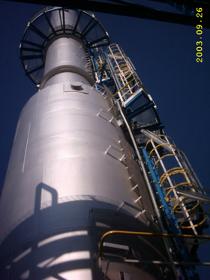
EUROPEM
Belgium
Normal incinerators for waste gas and/or waste liquids are used to destroy the hazardous waste streams with an efficiency higher than 99.99% whilst maintaining low NOx, CO and TOC emissions. Each incinerator is designed to meet project specific requirements, using standard modules and concepts. Vertical incinerators are mostly used where high dust formation e.g. ash or salt, are present. Most liquid and waste gas incinerators are horizontally configured. Key Features - Horizontal or vertical arrangement – Executed with or without mixing wall – Custom burner arrangements with separate waste gas or waste liquid injection lances, in the incinerator front wall, roof or body. – Designed to maintain a minimum residence time, typically one or two seconds, at a minimum temperature, typically 850°C or 1150°C depending on local legal requirements. Key Advantages - Destruction efficiency over 99.99% – Production of clean flue gases at high temperatures, as input for waste heat recovery units – No CO formation and low NOx emissions – Complete odour destruction
Request for a quote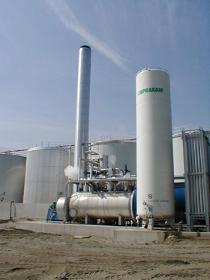
EUROPEM
Belgium
The HI Incinerator features a combustion chamber with a mixing wall which divides this chamber into a high temperature combustion HI zone and a lower temperature post-combustion zone. This particular configuration is most suited to the fuel efficient combustion of lean waste gases and effluents, as it reduces the need for any support fuel. Key Features - Combustion chamber with mixing wall – High intensity combustion zone at elevated temperatures – Waste gases and liquids are delivered to the HI zone through the burner and a series of injection lances. – The mixing wall creates a high temperature zone around flame ensuring complete oxidisation and also to increase turbulence, thus avoiding cold spots and the formation of CO – Post-combustion zone after the mixing wall to ensure residence time of 2 seconds at >850°C Key Advantages - All hydrocarbons are destroyed – No CO formation – Complete odour destruction – Up to 20% fuel saving – Destruction efficiency over 99.99%
Request for a quote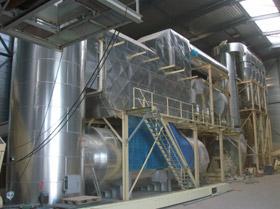
EUROPEM
Belgium
A LedeNOx incinerator is an oxidisation-reduction reactor and is the ideal design to achieve low NOx emissions whilst burning waste streams that contain Ammonia and bound Nitrogen. Part of the waste stream containing Ammonia is oxidised and forms NOx in the process. This NOx is then reduced by injecting the remaining Ammonia rich waste stream, where the Ammonia is used to promote a non-catalytic deNOx reaction and reduce NOx to Nitrogen and water. Key Features One combustion chamber with two mixing walls Part of the Ammonia containing waste is injected through the burner, part between the mixing walls. Part of the Ammonia is oxidised to form NOx, whilst the remaining Ammonia is used to react with NOx to form N2. The mixing walls ensure that the waste and combustion gases are mixed and also ensures a uniform temperature profile to improve the overall efficiency of the deNOx reaction. Key Advantages No need for SNCR or SCR deNOx to meet emission limits Ultra-low NOx combustion of waste streams with high bound Nitrogen or Ammonia contents. Complete oxidisation and destruction of all hydrocarbons No CO formation Complete odour destruction Destruction efficiency over 99.999%
Request for a quote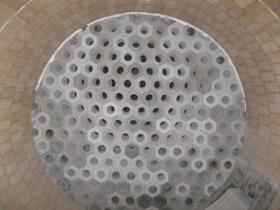
EUROPEM
Belgium
A Redu-reox incinerator features three reaction chambers for the low NOx combustion of waste streams and fuels with a high organically bound Nitrogen content. In the first reaction chamber a reducing environment is maintained to ensure that any free Oxygen will react with Hydrogen to form water. No Oxygen is left to combine with Nitrogen to form NOx. Complete combustion is achieved in the re-oxidation chamber, after the gases have been cooled in the quench stage. The temperature in the re-oxidation chamber is below 950°C to ensure that any Oxygen reacts with Carbon and Hydrogen and not Nitrogen, to minimize formation of thermal NOx. Key Features Three reaction chambers with staged combustion and intermediate flue gas cooling. First chamber operating under a reducing atmosphere at a temperature above 1250oC. Second chamber to quench the flue gases to about 800°C by either injection of steam or recirculated flue gas. Third or re-oxidation chamber for the post-combustion of remaining waste components at temperatures above 900oC. Key Advantages - Ultra-low NOx combustion of waste streams with high bound Nitrogen contents. – Complete oxidation with all hydrocarbons destroyed – No CO formation – Complete odour destruction – No need for SNCR or SCR deNOx to meet emission limits – Destruction efficiency over 99.999%
Request for a quote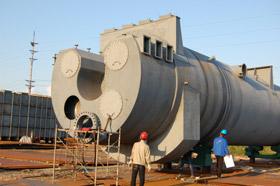
EUROPEM
Belgium
A SRU incinerator is an oxidation-reduction reactor for the recovery of elemental Sulphur from H2S rich waste gases. The first stage of the so called Claus process, is the complete free flame oxidisation of typically 1/3 of the H2S to SO2 in a reaction furnace (H2S + 1½ O SO2 + H2O). The SO2 and the then remaining H2S undergo the Claus reaction both in the reaction furnace and in a series of catalytic reactors (2 H2S + SO2 3S + 2 H2O) resulting in the overall chemical reaction H2S + ½ O H2 + S. Key Features One combustion chamber with mixing wall Part of the waste containing H2S is injected through the burner, the remainder before the mixing wall. The burner is a robust Multifuel design suitable for the combined combustion of different waste gas and gaseous or liquid support fuel streams. The mixing wall ensure the waste and combustion gases combine and also ensures a uniform temperature profile to improve the overall efficiency of the reaction. Key Advantages - Sulphur recovery – Ultra-low NOx combustion possible – Complete oxidisation of all hydrocarbons – No CO formation – Complete odour destruction – Destruction efficiency over 99.99% – For waste air/gas streams containing a high percentage of H2S
Request for a quote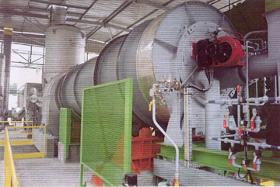
EUROPEM
Belgium
Rotary kiln incinerators are the workhorse of industry to burn solid waste in combination with sludge, waste gas and/or waste liquids and where the rotating motion transports the solid burning waste through the incinerator. Ashes are collected at the end of the rotating kiln and then combustion gases are completely oxidised in the static post combustion chamber. Rotary kiln incinerators typically feature different types of solid waste feeding systems for the bulky solid waste, containers and drums such as feeding screws and ram feeders. Waste gases and liquids are either injected into the rotary kiln, or the (vertical) post combustion chamber behind the rotary kiln. It provides for flexible and versatile incineration technology, but is characterised by a lower thermal efficiency with the associated higher operating and maintenance costs. Key Features Rotary kiln furnace with pre-set inclination and variable rotation speed. Labyrinth type seal with cooling and/or flushing with inert gas Different feeding systems for solid waste, waste liquids and waste gases Can be operated in a reducing or oxidizing environment Different drive mechanisms such as chain or direct drive, depending on the size of the kiln and the capacity Key Advantages - Robust and flexible design to burn a wide range of waste fractions – Proven technology – Destruction efficiency over 99.999% and less than 3% carbon in the ashes – Low NOx and CO emissions possible – Flue gas treatment train needed to meet acid, heavy metal, dust and PCDD/F emission levels
Request for a quote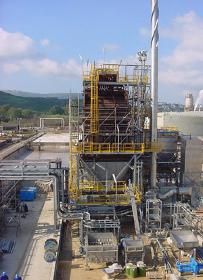
EUROPEM
Belgium
A fluidised bed incinerator is the technology of choice for the combustion of many sludge streams or solid waste streams with a high moisture content. In a fluidised bed reactor, an inert material, typically calibrated quartz sand, is fluidised by blowing air through the bed. The sand bed expands and provides an ideal medium for the mixing of waste with combustion air. Because the fluidised bed is maintained at an elevated temperature, typically between 650°C and 800°C the water evaporates and volatile organic compounds mix with combustion air whilst escaping from the fluidised bed. EUROPEM fluidised bed reactors are bubbling fluidised beds with high turbulence. Different feeding systems can be supplied ranging from feeding screws and over spreader stokers to injection lances. Key Features Turbulent bubbling fluidized bed of inert material Different feeding systems for solid waste, waste liquids and waste gases Can be operated in a reducing or oxidising environment Key Advantages - Robust and flexible design to burn sludge or solid waste with high moisture content – Stable combustion process of waste with varying moisture content over time – Proven technology – Destruction efficiency over 99.99% and less than 1% carbon in the ashes – Low NOx and CO emissions possible – Flue gas treatment train needed to meet acid, heavy metal, dust and PCDD/F emission levels
Request for a quote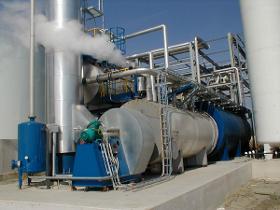
EUROPEM
Belgium
Most of the Europem incinerators are equipped with waste heat recovery systems. Europem has supplied a wide range of waste heat recovery installations including steam boilers, thermal oil boilers, gas-liquid heat exchangers, gas-gas heat exchangers, bath heaters and air heaters. All waste heat recovery installations are tailored to the needs of the client and the optimal design of the overall installation. Our range of waste heat recovery systems include: -Fired tube boilers with or without economizer. Single pass and multi-pass systems can be supplied Boilers can be equipped with an on-line cleaning system to allow operation with dust-loaded (flue) gases Boilers up to 30 MW capacity can be supplied with pressures ranging from 10 to 22 bar. - Single pass and multi-pass systems can be supplied -Water tube boiler boilers with or without economizer Superheated or saturated steam Horizontal or vertical boiler arrangements Bundles in refractory lined casing or with membrane walls Capacities up to 40 MWth with pressures ranging from 15 to 65 bar. – Thermal oil boilers – Bath heat exchangers – Air – flue gas tube and shell heat exchangers – Flue gas – liquid tube and shell heat exchangers – Air heaters Heat exchangers can be manufactured in carbon steel or high grade alloys e.g. Duplex, Hasteloy, Inconel, AISI 316, AISI 304.
Request for a quoteeuropages also recommends
A selection of companies related to the activity:
A selection of products that might interest you
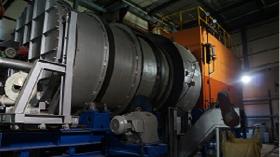
EC PLAZA
South Korea
To build a continuous supply steam supply system of 24 hours to reduce the existing energy cost in power generation, is a business-friendly environment to meet the low-carbon green growth national policy Product Specification 100Kw~3,000KW/H Product Use Used for waste incineration power generation system and wood pellet (coal) power generation system Our Company Changhwaenergy co.,ltd. The technology of CHANGHWA ENERGY is developed with utmost effort to create eco-friendly technology for the times of low-carbon era. Our accumulated technology has been a source of new leaps and we have achieved higher customer satisfaction than ever before. As a result of excellent technology development and research, we have developed and manufactured eco-friendly multi-tube electric boiler and constructed the production system.
Request for a quoteRequest for quotes
Create one request and get multiple quotes form verified suppliers.
- Only relevant suppliers
- Data privacy compliant
- 100% free



